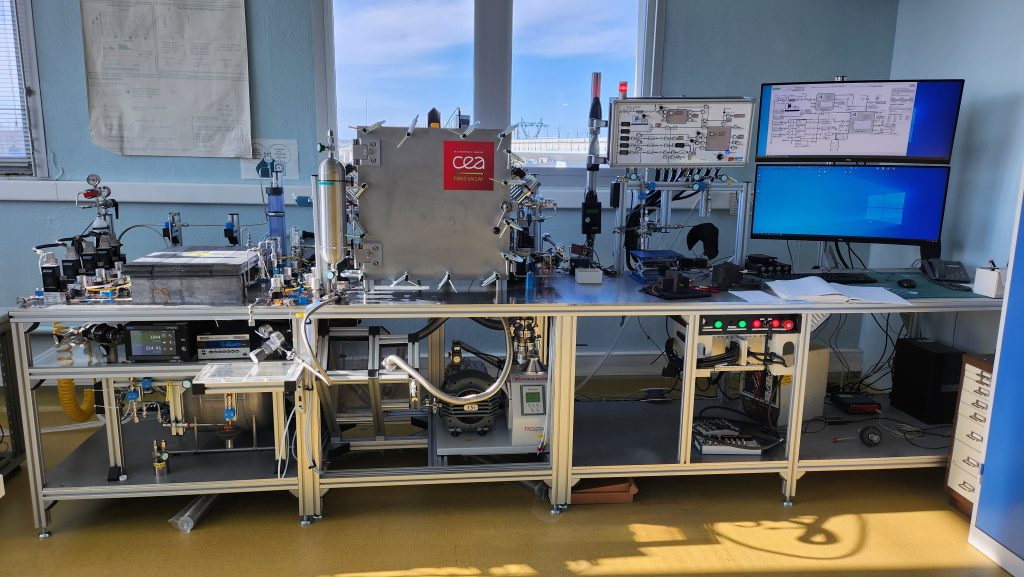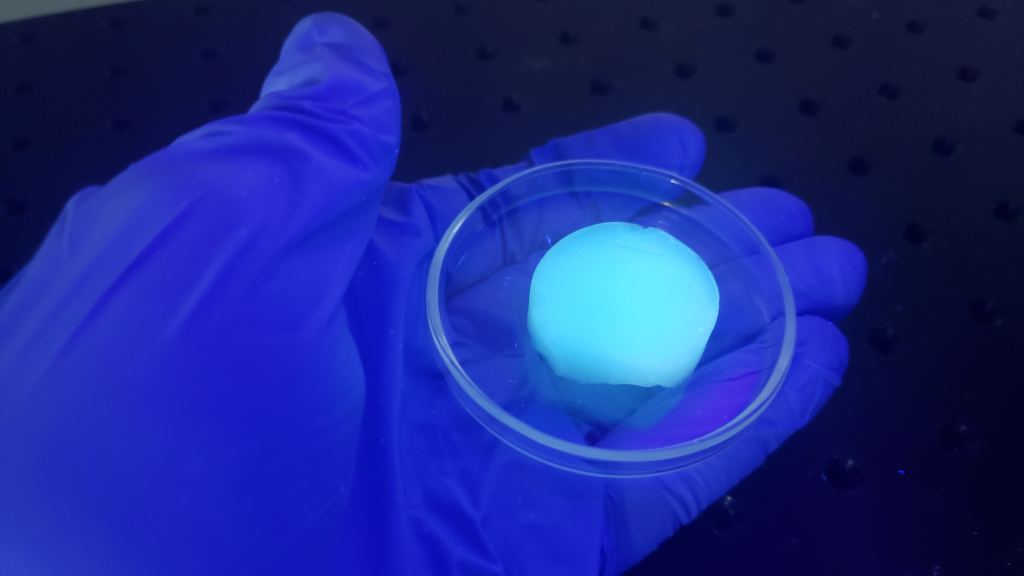
The nuclear industry produces radioactive gases like 3 H, 85Kr, and 14C. While these gases do not pose a major threat, their emissions are regulated and must be monitored. Accurate measurement data is vital to ensuring that nuclear facilities are functioning properly. But, because these radionuclides are pure beta emitters, special detection and measurement procedures must be used to acquire the necessary data. Today’s lab-based measurement techniques, based mainly on gas-liquid or gas-gas mixing principles, are costly, complex, slow, and waste-generating. In addition, these techniques cannot easily discriminate between pure beta emitters without resorting to cross-measurements—multiplying the number of devices or techniques that must be used.
Joint research by Institut Lumière Matière (UCBL), the Chemistry Laboratory of ENS Lyon (ENS Lyon), and Henri Becquerel National Laboratory (CEA) led to the development of an innovative real-time radioactive gas detection technology that leverages the synthesis of an inorganic scintillating aerogel. The resulting transparent composite is ultra-porous (pores of around 100 nm), with only 15% solid matter, a unique architecture that allows the gas to diffuse through the aerogel more easily. When a gas enters the scintillator, the beta radiation energy is converted into visible light.

The new scintillator has been integrated into various compact, highly sensitive devices that can detect the flashes of light and measure each photon almost instantaneously. The first device, intended for metrology applications, is based on a new method called Compton-TDCR. Three photomultipliers and a gamma detector combined with a single-energy beam allow the scintillation efficiency to be measured and radionuclides to be accurately counted.
The second, two-photomultiplier device is a more operational prototype that must be calibrated. It can perform in-line measurements of radioactive gases. Although it is a prototype, it has been patented and can be used in the field.
This research led to new ways of analyzing pulses of light. Unlike conventional scintillation-based methods, these new devices use signal time characteristics and not just counts. The increased precision led to the development of an innovative method capable of distinguishing and measuring the pure beta emissions of different energies in-line. A mixture of ³H and ⁸⁵Kr was measured in just 100 seconds. These advances have been validated both theoretically and experimentally.
These results, the fruit of long years spend developing new scintillation-based methods, are extremely gratifying.
This dynamic, multidisciplinary partnership, which sparked many enlightening debates along the way, will create new research avenues in scintillation-based radionuclide metrology.